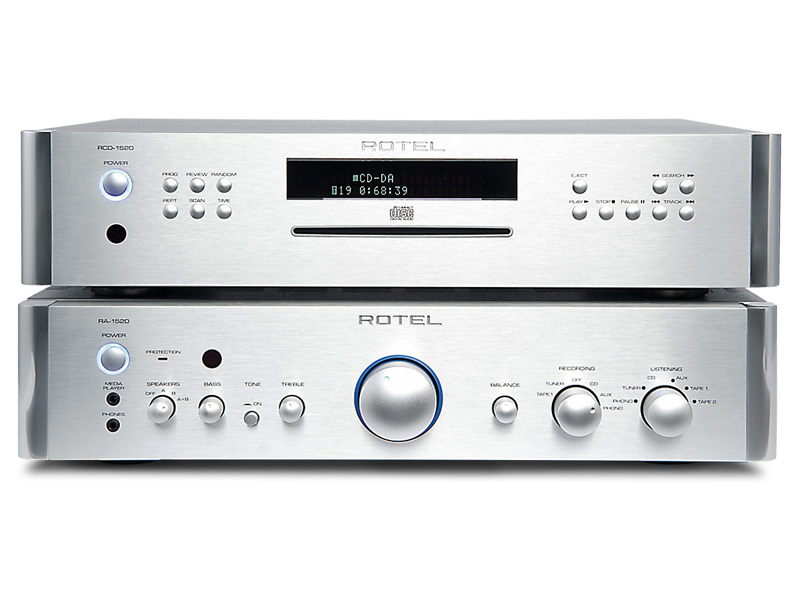TechRadar Verdict
Pros
- +
Enjoyable presentation
- +
Full hearted and inviting
Cons
- -
Ultimate resolution a little limited
- -
Phono stage rather dull and unconvincing
Why you can trust TechRadar
Believe it or not, these are Rotel's only current CD player and ditto integrated amplifier, though there's quite a choice of separate pre-and power amplifiers.
If you're familiar with past Rotels these don't look too outlandish, though there are tweaks and updates internally.
The most obvious bit of updating is the slot-loading CD transport, but under the lid there's plenty more bang-up-to-date technology, including Wolfson's latest and greatest DAC chip, plus good quality op-amps. The 'media player' input on the front of the amp is a distinctly 21st-century touch too.
Internally, the amplifier looks a good deal less modern than the CD player. Where the latter has surface-mounted components assembled on a small and very neat circuit board, the amp is full of through-hole components on a very large and quite spread out board, with quite a lot of flying wires around the place.
Rotel has also put money into specific areas, for instance the twin pairs of output transistors. Most manufacturers would only use single pairs in an amp of this rating, but twins give better protection against hard driving (not to say abuse) into low impedance loads.
The volume control is a good-quality part from ALPS, motorised and input switching is by means of relays, though the separate record-out selector is a mechanical switch.

Like Marantz, Rotel includes tone controls and these, plus the record selector and the phono input, make for a very well-featured amp.
Sign up for breaking news, reviews, opinion, top tech deals, and more.
Sound quality
There's much to admire here, but some specific areas still drew criticism from our 'blind' listeners. The good points include a very open, welcoming sense of acoustic space with performers clearly laid out in the soundstage.
Tonally the sound is even, with just a little brightness in the treble, but in a largely harmless way which helps keep details sounding lively and urgent. Bass extends very well and very evenly, with plenty of power when needed, but no risk of overpowering the mix.
Timing is good, though perhaps not the best of the bunch. Detail is also a little bizarre, being very good in complex music but slightly less assured in smaller ensembles, the reverse of the common finding.
Still, this is all rather nit-picking when it's clear that these units were much enjoyed overall by our panel and indeed by us in our sighted-listening tests. If you're after high-resolution sound this may not be it, but simple musical pleasure is here in abundance.
Follow TechRadar Reviews on Twitter: http://twitter.com/techradarreview
